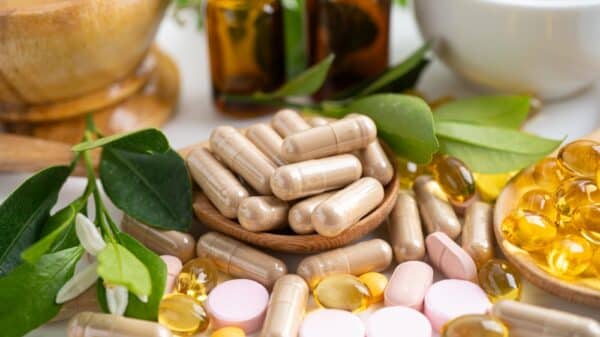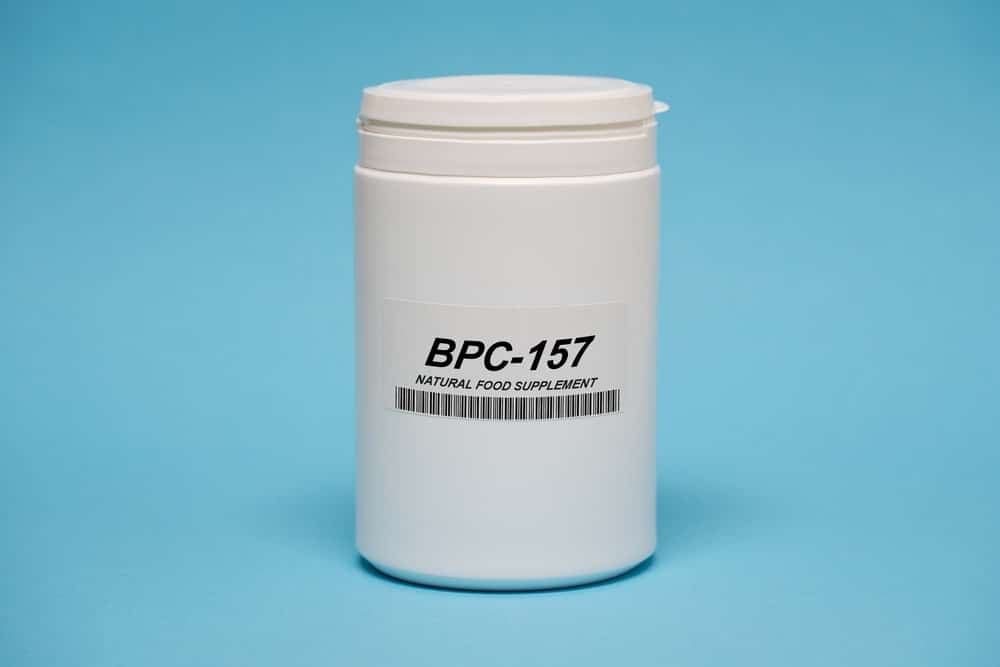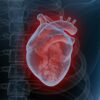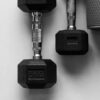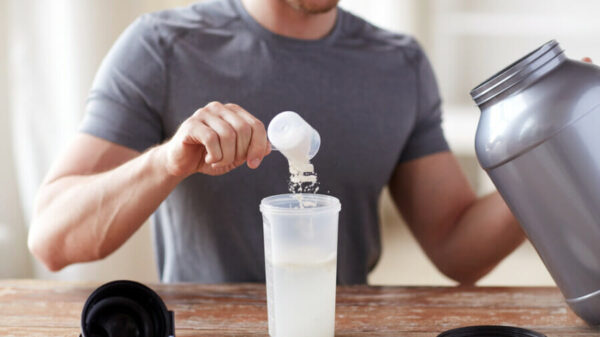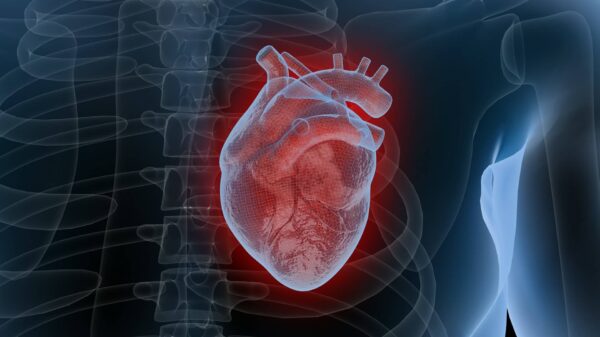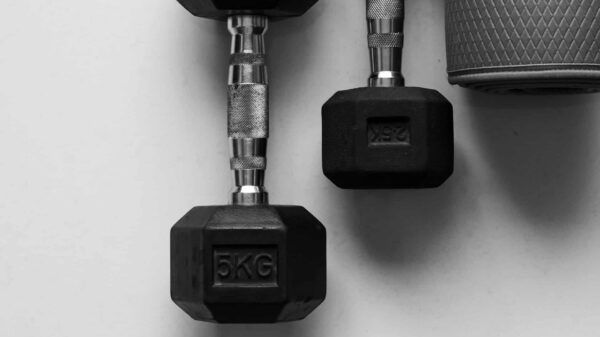If you’ve never experienced the minor setbacks of scraped knees or twisted ankles, you’re missing out on the valuable lesson of recovery from injuries.
But what if your body could recover even faster? What if there were something that not only facilitated your healing but also protected your internal organs, improved gut health, eased pain, and supported brain function?
That “something” might be an underappreciated molecule known as BPC-157.
You may have come across BPC-157 in conversations among health enthusiasts, narratives of athletic recovery, or perhaps through wellness companies like CellPeptides. It’s not a revolutionary cure-all; rather, it’s a synthetic peptide that has garnered attention from scientists, medical professionals, athletes, and biohackers globally.
This article aims to clarify what BPC-157 is, its mechanisms of action, the underlying science, and its potential to change our approach to healing.
What Is BPC-157?
BPC-157 stands for “Body Protection Compound – 157.” It is a peptide, which is a short sequence of amino acids. Peptides function as smaller versions of proteins that relay specific signals within the body.
This particular peptide is a synthetic replicate of a naturally occurring protein found in your gastric juice — specifically, the fluid in your stomach. Its initial protective and reparative properties for the stomach lining were noted by researchers.
What sets BPC-157 apart is its versatility; it doesn’t just benefit the gut but seems to enhance healing across various tissues, including muscles, tendons, joints, bones, nerves, and potentially the brain.
Given its wide array of possible advantages, many individuals are now incorporating BPC-157 into their recovery strategies or everyday wellness regimens—especially when pursuing natural methods for healing post-injury or safeguarding the body from stress.
How Does BPC-157 Work?
Although it is a small molecule, BPC-157 has powerful effects. Researchers believe it works by enabling the body to heal from within.
Here are some ways BPC-157 is thought to function:
Boosts Circulation
BPC-157 encourages the formation of new blood vessels through a process known as angiogenesis. Enhanced blood circulation delivers more oxygen and nutrients to the injured area, accelerating recovery.
Activates Growth Factors
It appears to elevate endogenous growth factors like VEGF (Vascular Endothelial Growth Factor), which significantly contribute to tissue repair.
Repairs Damage
BPC-157 may assist in mending and reconstructing damaged cells ranging from nerves to tendons. It not only results in reduced pain but also addresses the root causes of the issue.
Reduces Inflammation
Injuries often lead to swelling and inflammation. BPC-157 seems to mitigate this response, preventing impairment in the body.
In essence, BPC-157 communicates to your body, “It’s time to heal—and here’s how to go about it.”
What the Research Says (So Far)
Presently, most research on BPC-157 focuses on animal models, such as rats and mice. Nevertheless, these studies have consistently shown promising outcomes.
Here’s what the research reveals:
Muscle and Tendon Healing
- In animal studies, rats with damaged muscles exhibited significantly faster recovery and restoration of normal muscle structure when treated with BPC-157.
- It facilitated the reconnection of tendons to bones and improved the strength of the healing tissues.
- Healing occurred more rapidly, and the tissues appeared healthier under microscopic examination.
Brain and Nervous System
- BPC-157 has shown a capacity to decrease swelling in the brain and minimize nerve damage in experiments involving brain injuries.
- It may protect nerve cells and assist in their regrowth or reconnection following damage.
Gut Protection
- Given its origin from a stomach protein, BPC-157 naturally protects the stomach lining.
- It has potential in both preventing and treating ulcers, particularly those caused by NSAIDs (pain relievers such as ibuprofen).
- Additionally, it was noted to protect the livers and pancreases of test subjects from injury.
Healing After Surgery
- Observations suggest that BPC-157 significantly improves outcomes in surgical wounds and enhances tissue formation, leading to better healing.
- It has been shown to lower the risk of complications and infections following surgery.
These findings provide a glimmer of hope that BPC-157 might eventually be integrated into standard medical treatments, transcending its current use among athletes or wellness clinics.
Real-Life Uses of BPC-157
Although human studies are still in preliminary phases, many individuals and treatment facilities are already utilizing BPC-157 for specific health issues.
Let’s explore how it’s being applied in practical settings:
For Athletes and Recovery
Athletes often push their bodies to the limit. Competitive workouts and contests frequently lead to injuries like muscle strains, tendon tears, or joint discomfort. BPC-157 may significantly shorten recovery times and reduce downtime.
Here’s how BPC-157 aids in athletic recovery:
- Accelerates Muscle Repair: It assists in quickly healing torn or fatigued muscles.
- Supports Tendon and Ligament Strength: BPC-157 can help horses maintain healthy tendons and ligaments over extended periods, reducing the risk of injury.
- Alleviates Swelling and Pain: It keeps inflammation low, enabling swifter healing.
- Enhances Mobility: Many athletes experience quicker improvements in movement and flexibility with the help of BPC-157.
Increasingly, fitness professionals and trainers are integrating BPC-157 into their practices to help athletes maximize their strength, recover efficiently, and minimize the need for extended breaks from training.
Joint Pain and Arthritis
[Content to be continued…]
Experiencing joint pain or arthritis can make simple tasks — such as walking, bending, or lifting — feel daunting. BPC-157 may provide a novel approach to relief without the need for potent medications.
How BPC-157 May Aid Joint Issues:
- Anti-Inflammatory Properties: It alleviates joint swelling and helps reduce pain.
- Cartilage Protection: May slow the deterioration of the soft tissue located between bones.
- Joint Healing Support: Bolsters the healing of ligaments and tendons around the joint.
- Increased Flexibility: Easier movement occurs when stiffness is reduced.
BPC-157 and its effects on joint pain and arthritis have led many individuals with these conditions to report improved mobility and strength. While it isn’t a cure, it may provide significant relief for painful joints.
Support for Gut Health
The gut is more than just your stomach; it plays a critical role in digestion and overall health. A compromised gut lining can lead to discomfort, bloating, or chronic issues like ulcers or leaky gut. BPC-157 can be highly effective in addressing digestive challenges.
Here’s how BPC-157 benefits your gut:
- Repairs Stomach Lining: It protects and restores tissue damaged by stress, alcohol, or medications.
- Heals Ulcers: Research shows it assists in healing both gastric and intestinal ulcers.
- Inflammation Reduction: It alleviates gut inflammation, aiding conditions like IBS or Crohn’s disease.
- Gut Barrier Function Promotion: It helps seal small leaks in the gut wall, preventing toxins from entering the bloodstream.
A healthy gut translates to a healthier you.
Brain and Mood Support
The brain is delicate, and even minor injuries or ongoing stress can impair cognition, memory, and mood. At a cellular level, BPC-157 may offer protective effects for the brain and enhance mental wellness.
Potential Benefits of BPC-157 for Brain and Mood:
- Cell Preservation: It may minimize damage following head injuries, such as concussions.
- Nerve Healing Support: Helps in the repair of nerves within the brain and spinal cord.
- Reduction of Brain Inflammation: This may alleviate brain fog and improve clarity of thought.
- Regulation of Brain Chemicals: Initial studies suggest it might balance neurotransmitters related to mood, like serotonin and dopamine.
For those dealing with mental stress or recovering from injuries, BPC-157 may offer a gentle way to bolster brain and emotional health.
Is BPC-157 Safe?
A notable advantage of BPC-157 is its commendable safety profile.
Results from animal studies indicate:
- No observed toxic effects at higher doses.
- No harm to organs or blood.
- Well tolerated over extended periods of time.
However, BPC-157 is still primarily regarded as a research compound in most countries. It has not received FDA approval for general use and should only be administered under medical supervision.
Common Delivery Methods:
- INJECTION (Subcutaneous): This delivery method allows for rapid absorption and is the most prevalent form.
- Oral Capsules: Although easier to take, less is known regarding their effectiveness when consumed orally.
- Nasal Spray: A contemporary option, with some potential for cerebral effects.
Why Biohackers Favor BPC-157
If you’re acquainted with “biohacking,” then you understand it involves merging science and technology to enhance physical and mental capabilities. BPC-157 has quickly gained traction among biohackers.
Why is this?
- It supports overall bodily healing rather than just focusing on specific organs.
- Being non-hormonal makes it safer for long-term use.
- It can aid in both injury prevention and treatment.
Some biohackers have incorporated BPC-157 into their regimens alongside peptides, healthy diets, light therapies, and exercise to optimize their physical performance.
Specific Effects: Areas of Strength
Examining BPC-157 within various body systems reveals its remarkable capabilities.
1. Muscle and Tendon Repair
- Stimulates stronger muscle regrowth post-injury.
- Aids in aligning muscle fibers.
- May lessen soreness after exercise.
2. Joint and Bone Recovery
- Facilitates the healing of fractured bones.
- Reduces joint swelling and discomfort.
- Encourages cartilage development.
3. Gut Health and Digestion
- Heals the stomach lining.
- Aids in preventing ulcer formation.
- May relieve symptoms of Crohn’s disease or IBS.
4. Brain and Nerve Tissue
- Supports recovery following head injuries.
- Preserves nerve cells in the presence of toxins or low oxygen.
- Might enhance mental clarity in preliminary findings.
5. Organ and Circulatory Health
- Encourages the growth of blood vessels.
- Has reversed liver inflammation in animal studies.
- Supports heart recovery after strain.
What Lies Ahead for BPC-157?
In essence, BPC-157 is only beginning to reveal its potential. Here’s what we may witness soon:
Clinical Trials
- Human studies will help authenticate findings from animal research.
- These trials will also clarify safe dosages and treatment durations.
New Products and Formulations
- More user-friendly formats — such as sprays, creams, and pills — are in development.
- These could facilitate broader accessibility to BPC-157.
Expanded Medical Applications
- Healthcare providers may explore various uses for BPC-157, including:
- Post-surgery recovery.
- Pain management strategies.
- Addressing brain injuries and nerve damage.
Preventative Applications
- BPC-157 could not only be a treatment option but also a way to prevent injury in individuals at high risk, such as older adults or those experiencing high levels of stress.
Final Thoughts
While Furlaneto did not disclose the specific dosage of BPC-157, he indicated it is higher than what has been used in animal studies.
BPC-157 isn’t just another fleeting fitness trend; it represents a legitimate molecule gaining traction in scientific research.
You may find yourself supporting the healing of muscles, tendons, joints, the gut, and even the brain, all without harsh treatments or significant side effects.
Although most studies have focused on animals, the outcomes appear promising and largely consistent.
As human trials commence and access widens, BPC-157 might emerge as one of the most valuable tools in modern healing.
For now, it stands as a compelling example of how our bodies can be guided — gently and naturally — toward recovery.








